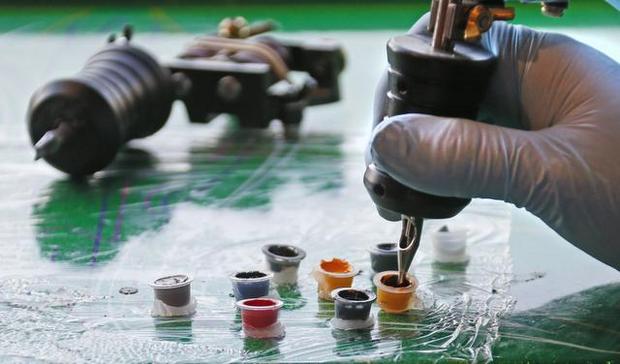How important is to know about tattoo health risks
Tattoos have become a mainstream part of Western fashion, common among both sexes and to all age groups. But, before you decide on a tattoo, you should know about all the possible health risks associated with tattooing. Tattoos are permanent, so you should take time to inform yourself about the methods of tattoo removal, in case you change your mind later.

A tattoo is a form of body modification, made by inserting ink into the dermis layer of the skin to change the pigment. There are a number of different tattoo ideas for men to pick from, but first make sure to read more about the tattoo health risks.
What are the health risks of tattooing?
The process of tattooing involves puncturing your skin which includes the risk of some skin infections. In addition to infections, there is a high risk of vascular diseases and sexually transmitted diseases which can be transmitted through blood – Hepatitis C and B, tetanus, tuberculosis and even HIV.
Some skin diseases are related to the pigment that is used for the tattoo. For example, red tattoo pigments can cause rashes, bumps and lumps, due to metal which is an integral part of this pigment. Bacteria that enters the skin can cause swelling, itching, redness and fever. Some metals in pigments can cause allergic reactions that cannot be cured for years.
You may develop other infections like Methicillin-resistant Staphylococcus aureus (MRSA) or subcutaneous infection in the form of inflammation of cellular tissue.
If you are satisfied with your ink, you should know that the tattoo requires care, so you need to follow the instruction by the tattoo artist. It is necessary to avoid direct exposure to sunlight, especially in the beginning. A tattoo will take a few days to heal completely.
How to remove a tattoo?
Sometimes it happens that we are not happy with the tattoo and we want to get rid of it. The tattoo can be removed, but this can be very long, expensive and painful process. Sometimes, especially in black tattoos, the results of removal can be quite good. But often the skin can not restore the original color and quality.
Tattoo removal is a complicated process and often causes scarring. There are three methods of tattoo removal: excision, dermabrasion and laser tattoo removal.
Surgical removal
Surgical removal of tattoo involves cutting out the skin which contains the tattoo. The edges are then stitched back together. This process leaves noticeable scarring, but it’s very effective, especially for small tattoos.
Dermabrasion
Dermabrasion is the another common method of tattoo removal. This process involves a high-speed rotary device to gently “sand” the top surface of the skin down, allowing the ink to leach out of the skin. In order to numb the skin, a topical cryogen is applied to the skin before the procedure, while afterwards, antibiotic ointment is placed on the skin to minimize scars. However, even dermabrasion may not be able to erase the tattoo completely.
Laser Removal
Dermatologists recommend laser as the best method of tattoo removal. This process involves pulsed lasers, which emit concentrated light energy in short pulses. This method usually requires multiple treatments (usually 10) over a period of one year. However, even after the treatment there’s a chance that your skin will still have traces of the tattoo. Laser removal is effective in most cases, but it can have some side effects such as redness, bleeding and soreness, but none of which could last for long.



